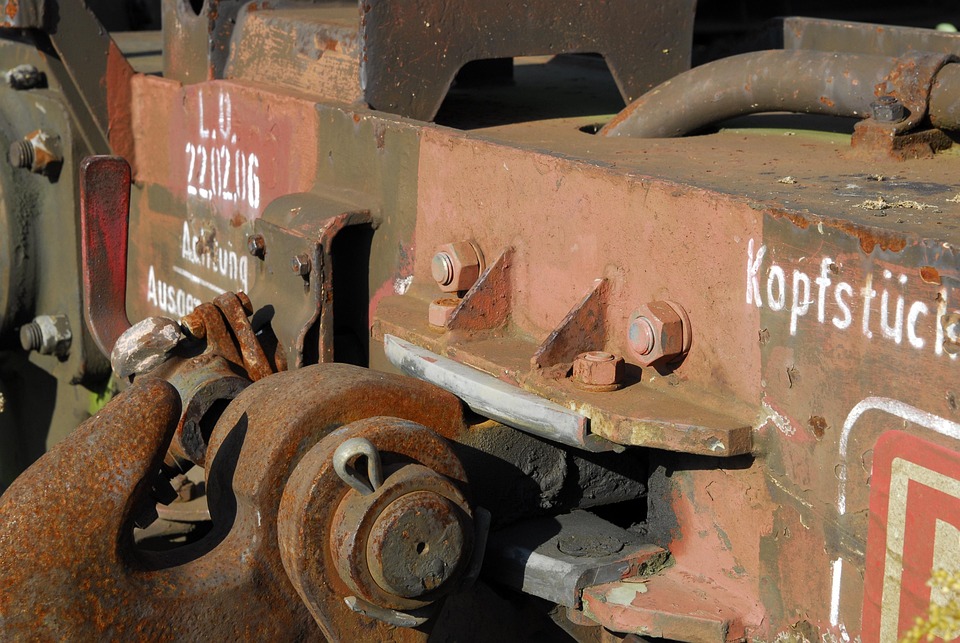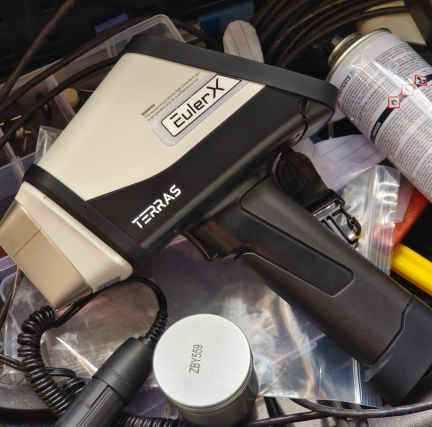
Alloy
A high-tech enterprise focusing on the development and application of X-ray technology products, committed to becoming a leading supplier of X-ray industrial testing solutions.
How Does Handheld XRF Work? A Simple, Non-Scientist's Explanation
You’ve probably seen it in movies or on TV: a scientist in a lab coat points a futuristic-looking gadget at an object, pulls the trigger, and—BEEP—the device instantly reveals what the object is made of. It seems like pure sci-fi, right?
Well, that technology is not only real, it’s being used every day by geologists, scrap metal recyclers, and art conservators. It’s called a handheld XRF analyzer (XRF stands for X-ray Fluorescence).
But how does it actually work? If the thought of "X-rays" and "fluorescence" makes your eyes glaze over, don’t worry. We’re going to break it down using a simple analogy you’re already familiar with.

Think of It Like a High-Tech Game of Pool
Imagine the atoms that make up any material—a rock, a piece of metal, an ancient pottery shard—as a set of perfectly arranged pool balls.
Each atom has a nucleus (the cue ball) surrounded by electrons orbiting in different layers or "shells" (the numbered balls).
The Break Shot (The X-Ray Beam): When you pull the trigger on the handheld XRF, it shoots a tiny, safe, and focused beam of primary X-rays at the sample. Think of this as the perfect, powerful break shot in pool. This burst of energy "breaks" the stable arrangement of the atoms.
The Balls Scatter (Electrons Get Knocked Loose): This X-ray "break shot" knocks an electron out of its inner orbit around the atom. This leaves an empty space, or a "hole," in the inner shell.
The Re-Shot (Fluorescence!): Nature likes stability. To fill that hole, an electron from an outer, higher-energy shell drops down to take its place. But here's the crucial part: to make this move, the outer electron has to release a tiny, specific packet of energy to settle into the inner shell.
Reading the Score (The Detector): The handheld XRF has a super-sensitive detector that "catches" this released energy packet. This released energy is the "X-ray Fluorescence" that gives the device its name.
Here’s the magic: Every element on the periodic table has its own unique "energy signature." The energy packet released by iron is different from the one released by gold, which is different from the one released by lead.
The analyzer’s computer instantly reads these signatures, counts how many of each it sees, and displays the results on the screen: "This sample is 75% Iron, 20% Nickel, and 5% Cobalt."
And it does all of this in seconds.
The Simple Breakdown: 3 Steps
To summarize the entire process:
ZAP: The gun shoots X-rays at the sample.
BOUNCE: The sample’s atoms respond by sending back their own unique fluorescent X-ray signals.
READ: The gun catches these signals, identifies the elements, and tells you the results.
But Wait, Is It Safe?
This is a common and important question. Yes, when used properly, handheld XRF is very safe. The X-ray beam is low-powered and is only emitted when the trigger is pressed while the device is properly positioned on the sample. The radiation is effectively contained within the measurement area. It’s a highly regulated technology, and operators are always trained in its safe use.
Engineered for precision and portability, the EulerX900S XRF Spectrometer performs lab-grade, non-destructive elemental analysis (Mg to U) in any environment. It delivers rapid identification of material composition and contaminants. Key features include a robust build, an intuitive touchscreen interface, and seamless Wi-Fi/USB connectivity—streamlining data management for quality assurance, scrap metal recycling, and environmental monitoring.

Terras EulerX900 Handheld Alloy Analyzer
So, What Is It Used For?
This "sci-fi magic" has incredibly practical applications:
Mining & Geology: To quickly identify valuable elements in rocks and soil, helping find new mineral deposits.
Scrap Metal Recycling: To instantly identify metal alloys, ensuring stainless steel is separated from aluminum and that toxic metals are handled correctly.
Art & Archaeology: To authentically analyze the pigments in a painting or the composition of an ancient artifact without damaging it.
Consumer Safety: To check for lead in old painted toys or cadmium in cheap jewelry.
So, the next time you see someone using one of these devices, you’ll know the secret. They’re not just pointing and shooting; they’re initiating a microscopic, high-speed game of atomic pool, and reading the final score to unlock the hidden secrets of materials all around us.
About Terra Scientific
Terra Scientific is a high-tech manufacturer specializing in the development and application of X-ray technology products. We are committed to becoming a world-class provider of X-ray industrial inspection solutions. Terra Scientific currently offers a range of products to global customers, including handheld alloy analyzer, handheld precious metal analyzer, handheld mining analyzer, benchtop precious metal analyzers, in-line analyzer, and spectrometer modules, along with XRF analyzers. We continuously serve global clients in fields such as mechanical manufacturing, metal processing, aerospace, petrochemicals, mining and geology, food safety, environmental protection, and scientific research.
To learn more, please don't hesitate to contact us via email at sales@terra-scientific.com, or visit our website at http://www.terra-scientific.com
Join Us
Subscribe to our email list for updates & promotions.



